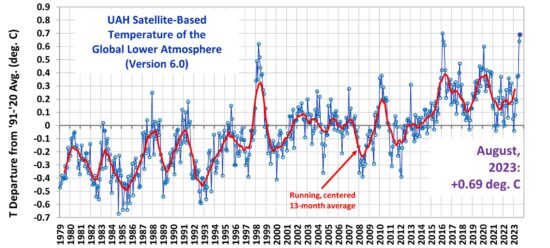About 180 were build last century in the US There were lots of problems with those built in 60's and 70's which resulting in many closing, about 30. This century we have only opened a few plant and there are only about 8 or 10 in the planning stages.
I believe we have learned a lot from our mistakes of the past plus there has been a lot of technological changes that have been introduced new plants, that make them safer, and more environmentally friendly. Also there are some promising new ideas in plants being planted and and constructed now such as using liquids sodium as a coolant which is a far better coolant than water, more friendly for the environment and much less likely to lead to a meltdown.
I'm not sure "more friendly for the environment" is how I would describe liquid sodium vs water.
Here is an excerpt from Wikipedia. It shows that sodium has several significant advantages over water in the safe operation of fast reactors, one of which is that zero transuranic elements are produced, drastically reducing the radioactive waste stream. Let me point out that the USS Seawolf (SSN 575), the second US nuke sub tried a sodium cooled reactor (the S-2G) but had several problems. It was eventually removed and replaced with a pressurized water reactor, primarily for safety reasons.
Advantages
All fast reactors have several advantages over the current fleet of water based reactors in that the waste streams are significantly reduced. Crucially, when a reactor runs on fast neutrons, the plutonium isotopes are far more likely to fission upon absorbing a neutron. Thus, fast neutrons have a smaller chance of being captured by the uranium and plutonium, but when they are captured, have a much bigger chance of causing a fission. This means that the inventory of
transuranic waste is non existent from fast reactors.
The primary advantage of liquid metal coolants, such as liquid
sodium, is that metal atoms are weak
neutron moderators. Water is a much stronger
neutron moderator because the hydrogen atoms found in
water are much lighter than metal atoms, and therefore neutrons lose more energy in
collisions with hydrogen atoms. This makes it difficult to use water as a coolant for a fast reactor because the water tends to slow (moderate) the fast neutrons into thermal neutrons (although concepts for
reduced moderation water reactors exist).
Another advantage of liquid sodium coolant is that sodium melts at 371K and boils / vaporizes at 1156K, a difference of 785K between solid / frozen and gas / vapor states. By comparison, the liquid temperature range of water (between ice and gas) is just 100K at normal, sea-level atmospheric pressure conditions. Despite sodium's low specific heat (as compared to water), this enables the absorption of significant heat in the liquid phase, while maintaining large safety margins. Moreover, the high thermal conductivity of sodium effectively creates a reservoir of
heat capacity that provides thermal inertia against overheating.
[7] Sodium need not be pressurized since its
boiling point is much higher than the reactor's
operating temperature, and sodium does not corrode steel reactor parts, and in fact, protects metals from corrosion.
[7] The high temperatures reached by the coolant (the
Phénix reactor outlet temperature was 560 C) permit a higher
thermodynamic efficiency than in water cooled reactors.
[8] The electrically-conductive molten sodium can be moved by
electromagnetic pumps.
[8] The fact that the sodium is not pressurized implies that a much thinner reactor vessel can be used (e.g. 2 cm thick). Combined with the much higher temperatures achieved in the reactor, this means that the reactor in shutdown mode can be passively cooled. For example, air ducts can be engineered so that all the
decay heat after shutdown is removed by natural convection, and no pumping action is required. Reactors of this type are self-controlling. If the temperature of the core increases, the core will expand slightly, which means that more neutrons will escape the core, slowing down the reaction.
Here is a quote and comments from Admiral Hyman G Rickover about the Navy's experience
Admiral Rickover described the frustrating nature of the sodium-cooled plant to the Joint Committee on Atomic Energy in 1957:
"We went to full power on the Seawolf alongside the dock on August 20 of last year. Shortly thereafter, she developed a small leak. It took us 3 months, working 24 hours a day, to locate and correct the leak. This is one of the serious difficulties in sodium plants."
Rickover then told the JCAE that the Seawolf had had about 10 percent of its heat-exchanger capacity cut out (by plugging tubes) and that the cutting out of the superheaters reduced power another 10 percent on the Seawolf. "With the reduced power, she makes about 90 percent speed," he told the members.
Of course, another problem (which Rickover pointed out) was the risk of radiation exposure to the crew from the sodium, which prevented rapid repairs (as the shielded area of the reactor compartment could not be entered until some time after shutdown). "Sodium becomes 30,000 times as radioactive as water," he told the Committee. "Furthermore, sodium has a half life of 14.7 hours, while water has a half-life of about 8 seconds." But this didn't compare to what Rickover considered the primary problem - safety, not only because of the half-life consideration but because of sodium's violently reactive nature with water. "There may be advantages for sodium for shore-based atomic power plants but I cannot see it for a ship. It is too dangerous for a ship," he directly told the JCAE.

www.ans.org

